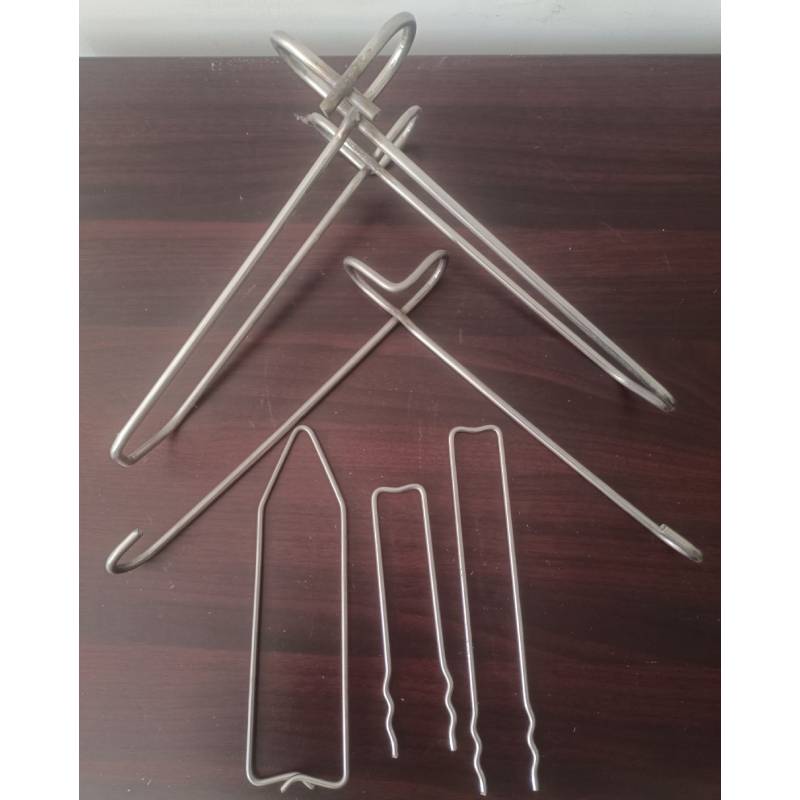
- Mobile Phone
- +8613931874955
- sales@cntcmetal.com
manufacturing springs
The Importance of Manufacturing Springs in Modern Industry
Springs are an integral component in a multitude of mechanical systems, playing a crucial role in energy storage, shock absorption, and force regulation. With applications in automotive, aerospace, electronics, and healthcare, the manufacture of springs is a vital aspect of modern industrial processes.
Types of Springs and Their Functions
Springs can be categorized into several types, including compression springs, extension springs, torsion springs, and flat springs. Each type serves a distinct purpose, tailored to meet specific operational requirements. Compression springs are designed to resist axial loads and are commonly used in applications like mattresses and automotive suspensions. Extension springs, on the other hand, are designed to stretch, providing a pulling force. They find their application in devices such as trampolines and garage doors. Torsion springs are engineered to produce torque or rotational motion, frequently used in mechanisms like clothespins and car doors.
Flat springs, also known as leaf springs, provide support while also allowing for flexibility and are often employed in suspension systems in vehicles. The diversity of spring types highlights the importance of understanding the specific needs of each application, ensuring that the correct spring design and manufacturing process are employed.
The Manufacturing Process
The manufacturing of springs requires precision engineering and advanced techniques. Typically, the process begins with selecting the appropriate material, which can range from stainless steel and carbon steel to specialized alloys depending on the required strength, elasticity, and environmental resistance. The common manufacturing methods include coiling, bending, and forming, each tailored to create different spring types.
Automated machinery, such as CNC machines, enables manufacturers to produce springs with high accuracy and consistency. This automation is critical in meeting the high-volume demands of industries while ensuring that each spring meets the specified tolerances and performance criteria. Additionally, processes like heat treating and surface finishing are often employed to enhance the mechanical properties and lifespan of springs.
manufacturing springs

Quality Control and Testing
Quality control is paramount in spring manufacturing, given the potential consequences of failure in critical applications. Manufacturers implement rigorous testing procedures, including tensile testing, fatigue testing, and dimensional inspections, to ensure that each spring meets industry standards and customer specifications. Advanced technologies such as computer simulations and analytical tools are also utilized to predict spring behavior under various conditions, allowing for better design and improved reliability.
The Future of Spring Manufacturing
As industries evolve, the demand for more sophisticated spring designs continues to grow. The integration of new materials, such as composites and advanced alloys, promises to enhance performance while reducing weight—a critical factor in sectors like aerospace and automotive. Moreover, the adoption of smart technologies, including IoT-enabled springs, paves the way for the development of smart systems capable of real-time monitoring and adjustments.
Sustainability is also becoming a focus in spring manufacturing, with companies seeking to reduce waste and energy consumption while adopting recyclable materials wherever possible. This trend reflects a broader move toward environmentally responsible manufacturing practices in all industries.
Conclusion
In conclusion, spring manufacturing is a fundamental sector that underpins many aspects of modern technology. As industries continue to advance, the demand for innovative and reliable spring solutions will only increase. With ongoing advancements in manufacturing processes, materials science, and sustainability initiatives, the future of spring manufacturing is undoubtedly promising. By understanding the critical role springs play across various applications, we can appreciate the complexity and ingenuity involved in their production, fostering a deeper respect for this essential engineering component.
share:
-
Why Sacrificial Formwork Is Redefining Underground ConstructionNewsJun.06,2025
-
The Structural Dynamics of Modern Concrete: How Snake Spacers Revolutionize Flexible ReinforcementNewsJun.06,2025
-
Snake Spacers Smart-Lock Concrete Reinforcement with Surgical PrecisionNewsJun.06,2025
-
Snake Spacers: Reinforcement Precision for Modern Concrete ProjectsNewsJun.06,2025
-
Snake Spacers Powering Concrete's Structural DNANewsJun.06,2025
-
Slither into Success: Snake Spacers' Precision Bite for Unbreakable ReinforcementNewsJun.06,2025
-
Sacrificial Formwork: Building Stronger, Faster, and Safer StructuresNewsJun.06,2025



















